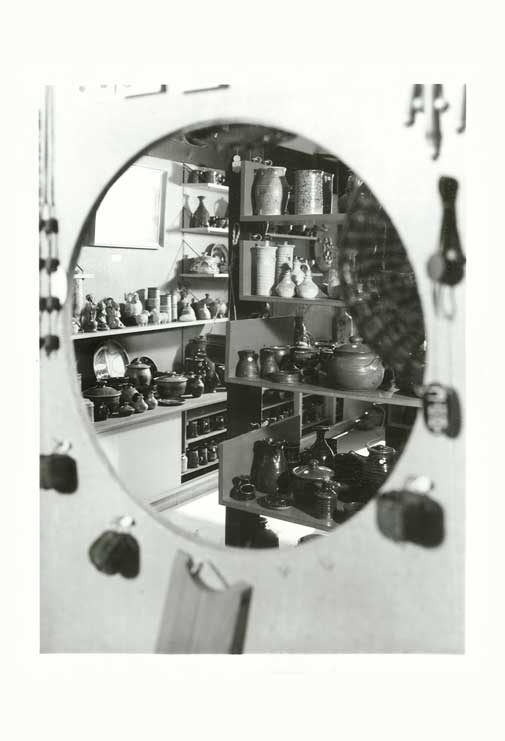- Vol. 06
- Chapter 07

The Reflection
As a kid I loved to look in the backroom
mirror, small and round, surrounded by keys
and other mysterious tokens Grandma
wielded in the shop and the studio.
It was halfway up the wall: From my small
vantage point it looked like the porthole
in a cruise ship’s cabin in an old Forties flick.
I liked to look at myself in that mirror
but also to angle my chair or milk carton
so that I could see the image of the shop—
its shelves and rows and rows of bowls,
pitchers, plates, cups, stewpots, and teapots—
minus the reflection of my self-conscious face.
I preferred losing myself in the variegated rows
of pottery, in the glow of their glazed surfaces.
Their hollows held me—the many selves I might
become or could imagine. I was so young
that numbers overwhelmed me. The sheer
abundance in that reflection stayed the fear
I felt in the shop itself. There I worried
that I would jostle—or, worse, handle—a cup
or bowl or teapot and break it. I imagined
the floor littered with teapot spouts
and my own shattering in the face of adult
anger and the ravage of self-mortification.
The Reflection
Like those ceramic wonders, whether homely
and sturdy or elegant as heirloom china,
I was deceptively fragile. Like them I looked
solid but could fracture. And as it seemed for them,
so did it for me: the break—even the smallest—
undermined my worth, erased the glaze,
the handicraft, the beauty, as if only the perfect
deserved our admiration or had a claim on us.
